Our Story
Long tradition of social services
The Jesuit tradition of servicing the leprosy and marginalized in Macau has his origins in Bishop Melchior Carneiro, the first Bishop of Macau, who founded “La Santa Casa de Misericordia”(The Holy House of Mercy) in 1569, with the goal of doing charitable work for the local community. The Holy House of Mercy was instrumental in establishing the first western-style hospital in Asia. The hospital, for treating victims of leprosy, was located in the St Lazarus district.
The new Casa Ricci
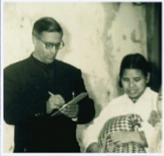 After Fr. Luis Ruiz was ordained in Xianxian county, Hebei province and stayed there for several years, he returned to Macau for medical care in 1951. World War II had just ended and the people of Macau were suffering great hardships. Macau was flooded with refugees from nearby areas. On arriving to Macau, Fr. Ruiz immediately began to serve these poorest of the poor. He opened the door of the Macau’s Jesuit residence -- Casa Ricci and started the “Ricci center for Social Services” (In 1971, became a subordinate organization of Macau Diocese and joined Caritas Internationalis, changing its name to Caritas de Macau). Since then,
After Fr. Luis Ruiz was ordained in Xianxian county, Hebei province and stayed there for several years, he returned to Macau for medical care in 1951. World War II had just ended and the people of Macau were suffering great hardships. Macau was flooded with refugees from nearby areas. On arriving to Macau, Fr. Ruiz immediately began to serve these poorest of the poor. He opened the door of the Macau’s Jesuit residence -- Casa Ricci and started the “Ricci center for Social Services” (In 1971, became a subordinate organization of Macau Diocese and joined Caritas Internationalis, changing its name to Caritas de Macau). Since then,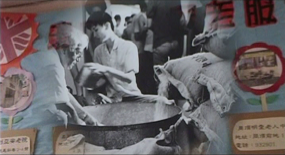 Fr. Ruiz was instrumental to set up the various charity institutions to take care the elderly, mentally challenged and even education of the social workers. In the mid 1980’s, Fr. Ruiz brought the Casa Ricci Social Service into mainland China through the caring of the people affected by leprosy, covering the Dajin Island in Guangdong Taishan, Sichuan, Yunnan, Shanxi provinces. In his late years, Fr. Ruiz suffered with diabetes and was wheelchair bound. After he has transferred the social service enterprise of Caritas de Macau to its chief executive Mr. Poon Chi Ming, Fr. Ruiz still concentrated the mainland charity work for the marginalized community like people affected and infected by leprosy or HIV/AIDS.
Fr. Ruiz was instrumental to set up the various charity institutions to take care the elderly, mentally challenged and even education of the social workers. In the mid 1980’s, Fr. Ruiz brought the Casa Ricci Social Service into mainland China through the caring of the people affected by leprosy, covering the Dajin Island in Guangdong Taishan, Sichuan, Yunnan, Shanxi provinces. In his late years, Fr. Ruiz suffered with diabetes and was wheelchair bound. After he has transferred the social service enterprise of Caritas de Macau to its chief executive Mr. Poon Chi Ming, Fr. Ruiz still concentrated the mainland charity work for the marginalized community like people affected and infected by leprosy or HIV/AIDS.
Start of Leprosy service
In 1986, Fr. Ruiz met an old priest in Jiangmen. He told Fr. Ruiz about an island (Dajin) that has a leprosy colony on it.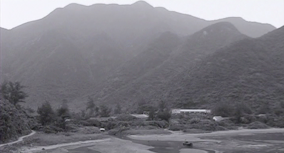 The inhabitants of this colony were abandoned and lived in miserable circumstances. Fr. Ruiz said that our work was to serve the poorest of the poor those who were in greatest need. That was the beginning of the rehabilitation work for the leprosy affected people. Fr. Ruiz brought food, vegetables, basic services such as housing, power, water and medical care to the people of Dajin island. But Fr. Ruiz discovered that was not enough as the patients were still missing something...love.
The inhabitants of this colony were abandoned and lived in miserable circumstances. Fr. Ruiz said that our work was to serve the poorest of the poor those who were in greatest need. That was the beginning of the rehabilitation work for the leprosy affected people. Fr. Ruiz brought food, vegetables, basic services such as housing, power, water and medical care to the people of Dajin island. But Fr. Ruiz discovered that was not enough as the patients were still missing something...love. 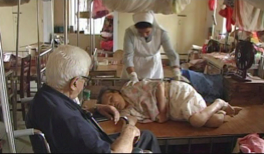 He then invited some Catholic Sisters to go to live in the island to take care of the patients there and totally revitalized the leprosy community there. The people there now live in dignity and integrated into the society just like any other human being.
He then invited some Catholic Sisters to go to live in the island to take care of the patients there and totally revitalized the leprosy community there. The people there now live in dignity and integrated into the society just like any other human being.
Upon being asked for help by other leprosy community in the north, Fr. Ruiz went to Yunnan and Sichuan to help establish other leprosy centers in remote areas deep in the mountains. The leprosy patients now have dependable drinking water and new houses. The assistance of the Sisters has alleviated much of their sickness and pain. With the support from the benefactors worldwide, he has helped more than 140 leprosy communities.
Education for the poor
Fr. Ruiz also considers the education of leprosy patients’ children to be the greatest importance. He strives to provide non-discriminatory learning environments that will ensure a bright future for these children.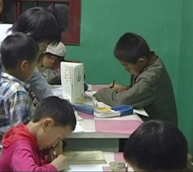 Because the children of leprosy patients suffer discrimination, taking them out of the leprosy community and bringing them to a place where other people don’t know, Fr. Ruiz established “children home” where they are specially treated equal and protects them from psychological harm. The children have learning opportunities just like ordinary normal children and can live in a normal environment. At the same time, they also learned something more important from Fr. Ruiz -- love. In Fr. Ruiz’s eye, these children homes have limited resources but boundless love can provide a door of hope and relief from the hardships of the leprosy villages.
Because the children of leprosy patients suffer discrimination, taking them out of the leprosy community and bringing them to a place where other people don’t know, Fr. Ruiz established “children home” where they are specially treated equal and protects them from psychological harm. The children have learning opportunities just like ordinary normal children and can live in a normal environment. At the same time, they also learned something more important from Fr. Ruiz -- love. In Fr. Ruiz’s eye, these children homes have limited resources but boundless love can provide a door of hope and relief from the hardships of the leprosy villages.
Rehabilitation services for HIV/AIDS victims
The number of people with leprosy worldwide is now under control and is shrinking. Fr. Ruiz and Casa Ricci will continue to care for leprosy patients but at the same time he is turning his attention to AIDS victims. These victims suffered same kind of discrimination and lack of care as leprosy patients. He established a loving care center in Hongjiang, Hunan province so that these AIDS victims could live with dignity in a loving atmosphere when their bodies became weak and helpless. The children victims were given a right to equal treatment by the educational system and go out to live with other children.
He established a loving care center in Hongjiang, Hunan province so that these AIDS victims could live with dignity in a loving atmosphere when their bodies became weak and helpless. The children victims were given a right to equal treatment by the educational system and go out to live with other children.
Casa Ricci
Today, CRSS currently runs 50 programs distributed in 13 provinces in China with 64 Leprosy centers for a total of 4,000 leprosy affected patients, five (5) HIV homes with a total of 40 children, 300 HIV+ mothers/adult, 200 adults at risk of affecting AIDS, and 1500 students from poor families.
Long tradition of social services
The Jesuit tradition of servicing the leprosy and marginalized in Macau has his origins in Bishop Melchior Carneiro, the first Bishop of Macau, who founded “La Santa Casa de Misericordia”(The Holy House of Mercy) in 1569, with the goal of doing charitable work for the local community. The Holy House of Mercy was instrumental in establishing the first western-style hospital in Asia. The hospital, for treating victims of leprosy, was located in the St Lazarus district.
The new Casa Ricci


Start of Leprosy service
In 1986, Fr. Ruiz met an old priest in Jiangmen. He told Fr. Ruiz about an island (Dajin) that has a leprosy colony on it.


Upon being asked for help by other leprosy community in the north, Fr. Ruiz went to Yunnan and Sichuan to help establish other leprosy centers in remote areas deep in the mountains. The leprosy patients now have dependable drinking water and new houses. The assistance of the Sisters has alleviated much of their sickness and pain. With the support from the benefactors worldwide, he has helped more than 140 leprosy communities.
Education for the poor
Fr. Ruiz also considers the education of leprosy patients’ children to be the greatest importance. He strives to provide non-discriminatory learning environments that will ensure a bright future for these children.

Rehabilitation services for HIV/AIDS victims
The number of people with leprosy worldwide is now under control and is shrinking. Fr. Ruiz and Casa Ricci will continue to care for leprosy patients but at the same time he is turning his attention to AIDS victims. These victims suffered same kind of discrimination and lack of care as leprosy patients.

Casa Ricci
Today, CRSS currently runs 50 programs distributed in 13 provinces in China with 64 Leprosy centers for a total of 4,000 leprosy affected patients, five (5) HIV homes with a total of 40 children, 300 HIV+ mothers/adult, 200 adults at risk of affecting AIDS, and 1500 students from poor families.